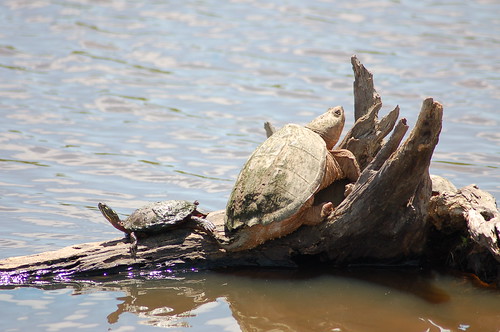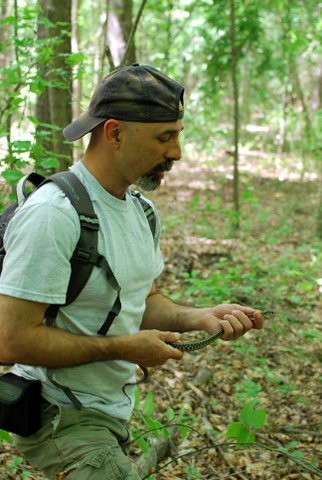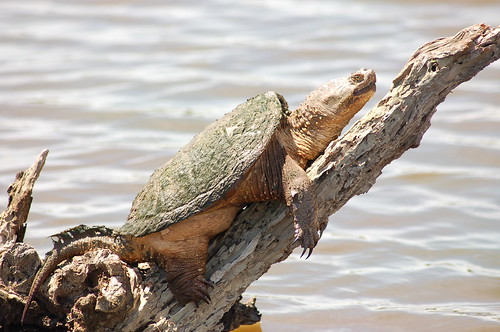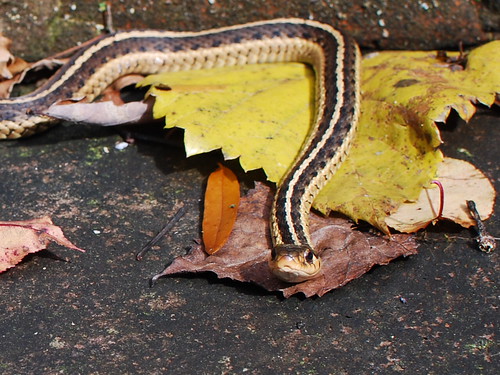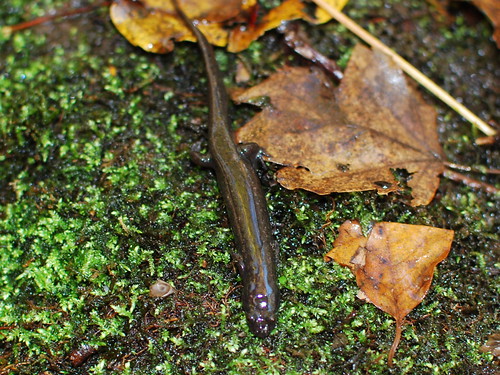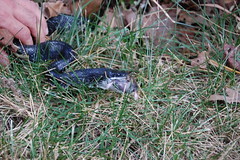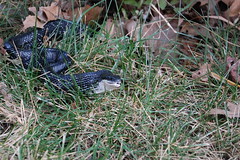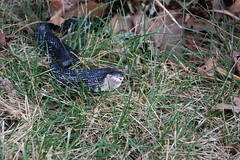Taking the crew through the wetland via the boardwalk trail. If you have not been to Huntley then you are missing out on some spectacular sightings. It’s a great place to observe and photograph a variety of species up close. In this photo someone has spotted something lurking in the cattails
Discussing with the group the biology and behavior of an Eastern Snapping Turtle
Snapping Turtle and Eastern Painted basking on a log together.
We found a couple of these today. Here I am showing an Eastern Garter Snake to the group
Red Wing Blackbird
Eastern Snapping Turtle basking
Hooded Merganser and her chicks
Southern Leopard Frog
Today Mike Gregory and I led Herp survey for a group of Virginia Master Naturalist students. Our program centered around the reptiles and amphibians of Huntley Meadows Park ( the FCPA) emphasizing practical field experiences in species identification and their habitats. We did not encounter all of the species that have been documented in the park from previous surveys. We did however find a few common species and possibly two species that were not listed on the park’s species list. Overall it was perfect weather and a great bunch of student naturalist. Anuran speices: encountered were American Bull Frog, Southern Leopard Frog, Pickerel Frog, Green Frog, American Toad. Turtles: were Red Ear (not on the park’s list), Lots of Snapping Turtles, Painted, Mud and/or Musk Turltes. Lizards: (identification pending) were five lined and Broad head skinks. Snakes: two species but of the same genus and they were Ribbon and Garter Snakes. Other sitings not related to our target species included a variety of birds. Some of the more interesting of these sightings was the Hooded Merganser, an Oven Bird, Egrets and a Sand Hill Crane. We also heard two Barred Owls calling to one another.



